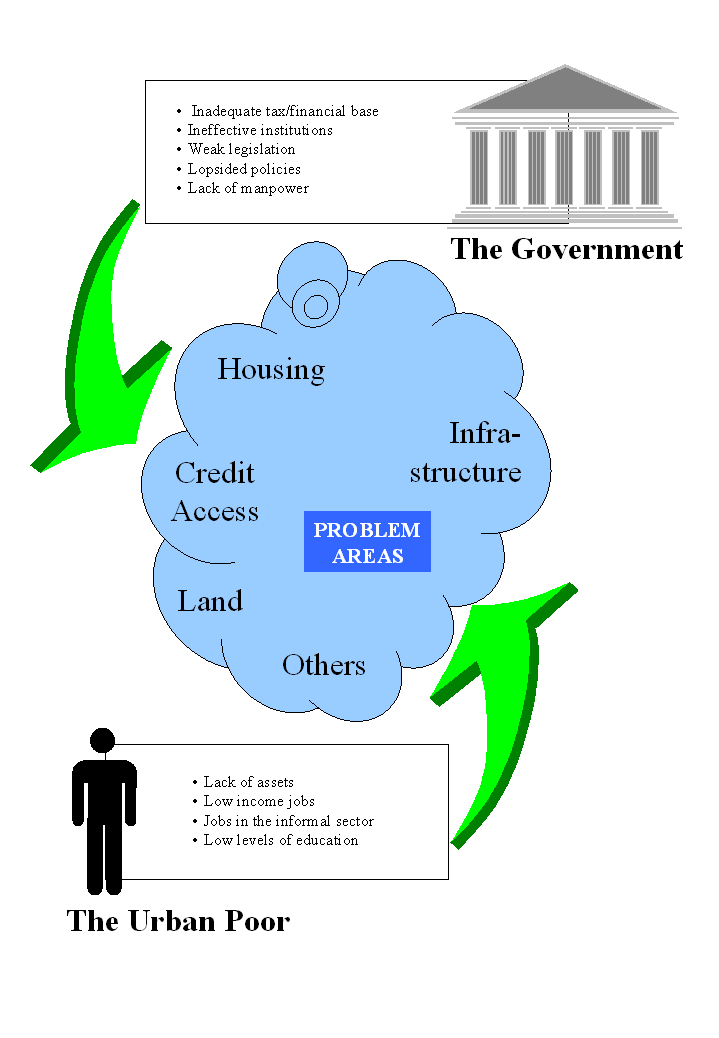Slums and squatter settlements, in fact, represent four trade-offs for a low-income family:
Low-income families in urban areas find themselves with low financial and other assets, working in low-income jobs in the informal sector and have few skills and education. On the other hand, local governments face their own slew of shortcomings and challenges, in the form of inadequate tax/financial base, ineffective institutional structures and mandates, weak legislation, with their weak implementation. Lopsided policies are further compounded by lack of staff members with the appropriate skills and knowledge to address urban challenges. These shortcomings, on the part of the urban low-income families and the local government agencies, manifest themselves in the impact they have on the urban character of a city - poor housing conditions for low-income families, lack of formal credit access, land ownership structures, poor infrastructure services provision that result in the slums and squatter settlements that we see today. We always also need to remember that slums and squatter settlements are always in a constant state of change, where people do invest time, money, and resources to upgrade their homes - particularly over time, as a sense of "perceived" tenure is developed.[2]. Governments have not been idle either, and have in several cases provided utilities, community water taps and toilets, etc. as well as "sites-and-services" programmes that have enabled families to build their own homes on serviced land parcels.[3] The complex web of needs, resources (and who controls those resources), and who tranfers the resources to the end use - low-income families - calls for innovative solutions that is multi-sectoral, involving different stakeholders. Footnotes:
|
